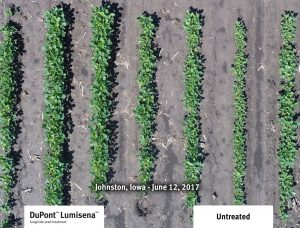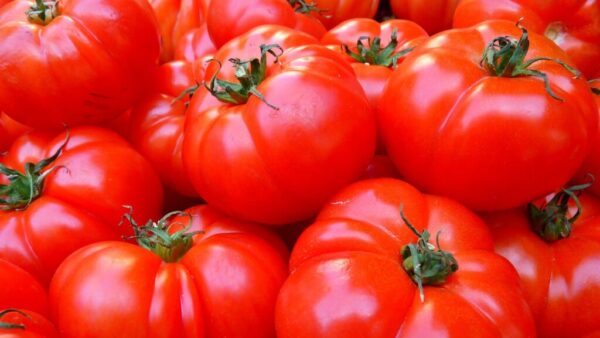Months have elapsed since the planting season and at this point on the calendar, inputs like seed treatments aren’t top of mind for most growers. Despite that fact, late summer is the ideal time for seed sales professionals to lace up their boots and walk fields with growers to point out the returns seen in maturing crops because of early season investments.
“I love the idea of talking about seed treatment as we approach harvest time so that seed treatments aren’t just an afterthought but a forethought,” said Ron Sabatka, technical services manager for seed applied technology with Corteva Agriscience™, Agriculture Division of DowDuPont.
In the spring, seed treatment discussions center on vigor and emergence. Now’s the ideal time to point out stand differences said David Borgmeier, Corteva Agriscience Seed Applied Technology Category Leader.
“It’s important to make sure the grower understands they can have better fall population numbers that will help them at harvest time because of seed treatments,” he said.
“In the fall, growers are thinking about yield and typically focus on genetics but seed treatments have enabled those yield gains. We don’t want them to lose sight of that fact especially when examining their fall harvest results.”
Who do you invite?
Borgmeier believes it’s a good idea to walk fields with growers, particularly in a growing season like 2018.
“A lot of acres had rain pressure early and difficult spring planting conditions. See what worked well in their fields and evaluate how the seed treatment performed,” he said.
Sabatka said it’s key that the grower or their employee responsible for making seed decisions is present for scouting.
“If that’s not possible, be sure to invite a consultant or an operations agronomist who could help inform the primary decision maker,” he said.
The Elements of a Quality Field Walk
Sabatka said it’s imperative to have simple but essential tools including a shovel or small hand spade, a camera or cell phone for taking pictures and bags for taking specimens from the field. He’s found scouting digital tools, like the Encirca ® services mobile app, to be very valuable too.

Borgmeier said population and runt count numbers should be calculated while scouting.
“Seed treatments result in fewer runts because the plant’s ability to emerge and establish itself is better. You want to make sure and point that out to growers,” he said.
In soybeans, field trials have shown DuPont™ Lumisena™ fungicide seed treatment delivers 2,500 more plants per acre compared to non-treated plant stands, he notes. This may not be visible from the road, but it can show up in the yield.
Sabatka said no matter the time of year, field scouting should involve an overall field assessment plus problem spots like tree lines, low-lying areas prone to ponding and compacted soil.
“Often times in the late summer or early fall we can start to get a general feel for potential issues that might take place next year,” he said.
Why make the effort?
Scouting fields with growers has benefits that extend beyond one growing season. It’s a great way to building relationships with them.
“Show them you’re a full-service provider and you’ll be with them throughout the year. Being on their property where they used the products you sold them shows you care,” Borgmeier said.
Plot tours and field trial events have their purpose, but personalized information is very valuable.
“Growers like to learn, and field walks can be one of the best learning environments. Even in late fall you may not see the stand protection like you might in the spring but it’s still a good time to have a conversation about particular diseases that may have been an issue in the spring,” Sabatka said.
Interacting with growers now is one way to set the stage for next year’s product positioning, Borgmeier said.
“We want to refresh the value of what the decision they’ve made and remind them that shortly after harvest seed companies will begin selling for 2019 and seed treatment should be a part of those conversations,” Sabatka added.












